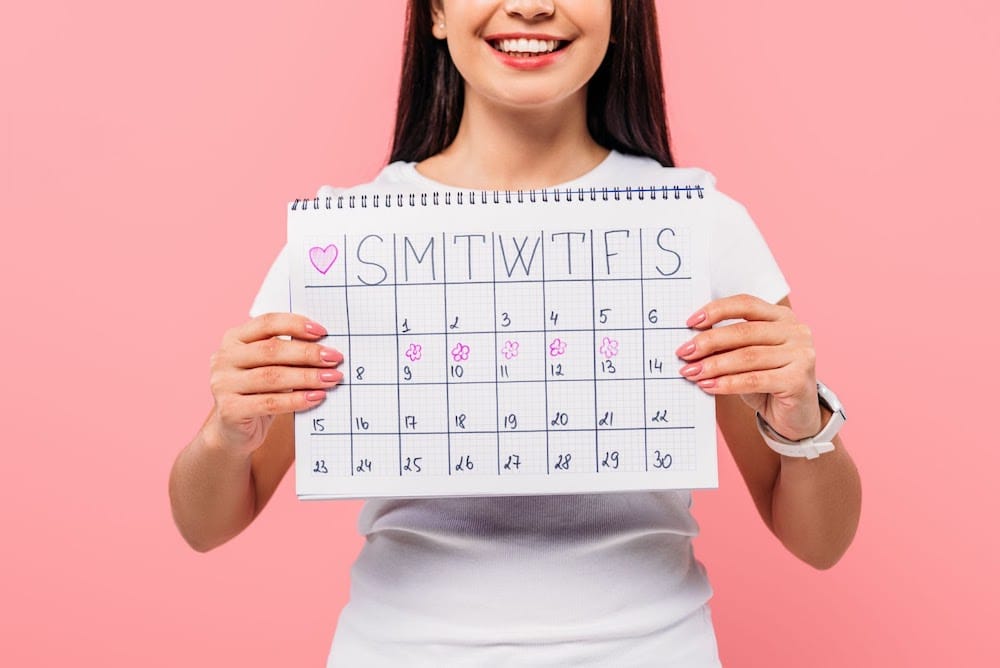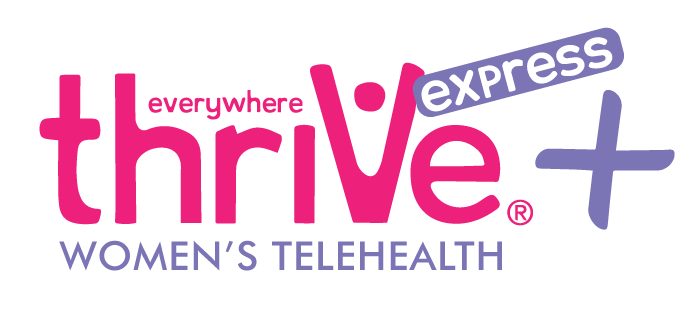Ever heard about ovulation test strips? They’re used for a couple of different reasons, and super easy to use. If you’re a woman looking to learn more about your cycle and take more control over your health, welcome! ThriVe+ is a safe space for women to learn, ask questions, and connect. We’re basically your BFF when it comes to women’s sexual health.
Your health matters. Your future is important. And your goals are worth it. Girl, you’re beautiful, smart, and capable.
Let’s talk more about these test strips and how they could be useful to you. We’re all different, so understanding ovulation and how to track yours is helpful. We’ll start with the basics.

What’s ovulation anyway?
Ovulation is a part of a woman’s monthly cycle. It happens when an ovary releases an egg. This egg travels down the fallopian tube and can meet with sperm to start a pregnancy.1
Why does ovulation happen?
Ovulation is the time when a woman can get pregnant. Your body prepares for this every month, so the egg has a chance to meet with sperm. If the egg is fertilized, it can grow into a baby. What if there’s no sperm to meet with the egg? Well, the egg and the lining of the uterus will be shed during your period.2
Can you tell when ovulation is happening?
Yep! There are a few ways to tell if you’re ovulating:
Ovulation test strips
– How do they work? : You pee on a strip, and it shows if there’s a surge in luteinizing hormone (LH). This surge happens right before ovulation.3
– When should you use it? : An average cycle is 28 days (although yours might be longer or shorter!). Usually ovulation happens around day 14 — or two weeks after the first day of your last period. Near the middle of your cycle, you can start using the strips once daily and keep testing until you see the surge. It’s like becoming a scientist, studying your cycle. Many women find it empowering!4
Without test strips
Body signs
Your body can actually give you signs that ovulation is going to happen, without having to test! When you jot down any of these things you notice, you’ll be able to see patterns in how your body functions each month. Check out how your body might tell you ovulation is on it’s way, without having to use a test strip:
– Changes in cervical mucus: Your vaginal discharge becomes clear and stretchy, like egg whites. Try to pay attention to how the mucus changes throughout your cycle.4
– Basal body temperature (BBT): Your body temperature slightly rises after ovulation. You can track it by taking your temperature every morning before getting out of bed. It’s really only a tiny change, so you’ll need a “basal body” thermometer. It’s more sensitive than a normal thermometer, and it can sense the slight rise in your temp.4
– Ovulation pain: Some women feel a mild pain or cramp on one side of their lower abdomen when they ovulate. It shouldn’t feel intense. Talk to your doctor if you’re experiencing intense pain.5
By paying attention to these signs, you can get a good idea of when you’re ovulating! It’s the female body amazing? Knowing this can help if you’re trying to take control of your health and be the expert on your body.
Ovulation tests
So let’s sum up what these little strips are all about.
– Purpose: To identify the ovulation stage of your cycle.
– How do they work?: These tests detect a surge in luteinizing hormone (LH), which occurs right before ovulation.3
– When should you use them?: Mid-cycle, typically around day 14 of a 28-day cycle, but it varies for everyone.4
– Why are they helpful?: Knowing when you ovulate can help if you want to track your cycle and understand your body. But these tests aren’t a reliable way to prevent pregnancy. They aren’t meant for that use.3
Pregnancy tests
How are pregnancy tests different?
– Purpose: To confirm whether you are pregnant.
– How do they work?: These tests detect the presence of human chorionic gonadotropin (hCG). It’s a hormone produced during pregnancy.6
– When should you use one?: After a missed period, usually about two weeks after ovulation. That’s where using ovulation test strips can come in handy — to know when to expect your period.
– Why are they helpful?: It provides confirmation if you suspect you might be pregnant.

So what’s the big difference?
– Timing: Ovulation tests are used to determine when you ovulate. Pregnancy tests confirm if conception has already occurred.
Like we mentioned earlier, ovulation tests shouldn’t be used to try to prevent pregnancy — they aren’t designed for that purpose.3
If you think you might be pregnant, ThriVe+ offers no-cost pregnancy tests that are lab-quality. We’ll help you get the most accurate results.
– Hormones detected: Ovulation tests look for LH, while pregnancy tests look for hCG.6, 3
– Basic uses: Ovulation test strips help you monitor your cycle, while pregnancy tests confirm pregnancy.
At ThriVe+, we offer no-cost pregnancy tests to give you reliable answers and empower you with information for your reproductive health decisions. Whether you’re trying to understand your cycle or have questions about your sexual health our blog is a resource for medically-accurate information,. Looking for a no-cost pregnancy test? We’ve got your back. All of our services are no-cost and pro-woman. Come see us soon, and we’ll be happy to help.
Sources:






